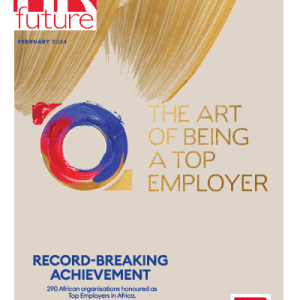As a challenging year winds down, companies are sifting through what worked and what didn’t as they prepare to reboot for 2021 after dealing with the many difficulties brought on by the pandemic.
And if a business is planning significant changes in its operations in the New Year, the leadership team’s empathy for the workforce is vital in the process.
Leaders need to be empathetic to help their employees manage stress and stay productive, especially in these unprecedented times. The holidays always add stress, but company transitions heading into the New Year, magnified by the uncertainty we all face due to COVID-19, can send that stress off the charts.
For example, when a company installs new software or makes other major changes in operations and processes, the end users and middle managers can really feel it as the company tries to ensure those transitions are smooth. Having the human touch from company leadership is critical, as is providing proper training and giving confidence to middle management as their teams implement those systems.
Here are five tips on how leaders can lower stress and keep morale high while implementing changes:
- Start with acknowledging the emotional side of change. There are unexpected twists and turns to any big change in company operations. Employees have to adjust to new processes – sometimes after having done things the same way for many years. This learning curve can understandably cause panic. Employees can be resistant to learning how to make it work to their advantage. Leaders need to expect these reactions and develop a plan based on empathy in order to deal with it.
- Know how to listen. True listening means listening with open ears, open eyes and an open heart. It means paying attention to body language, to tone of voice, to the hidden emotions behind what’s being said. You’ll always gain more from listening than from speaking.
- Know what empathy is. For a leader, empathy is more than listening and nodding your understanding; it’s understanding that your employees have their own working and communicating styles and a life separate from work. In stressful, uncomfortable times like these when change is thrust upon them, you can stay connected with them by making them feel more comfortable. Leaders can begin to do that when they put themselves in their employees’ shoes to better understand things from their perspective.
- Build a culture of psychological safety. Allowing people to feel free to air their concerns and speak their truths during change and upheaval can do wonders for the work culture in the long run. The foundation becomes stronger because of the trust factor. Leaders understand the challenges that exist through the organization, which helps them be more effective in leading their teams through change.
- Emphasize “change energy” over “change fatigue.” The best organizations understand that there is no endpoint to change. Change is for the greater good of continual evolution collectively and individually. Therefore, there are no excuses like being fatigued by change. Instead, leaders need to sell change as a necessary energizer that benefits everyone. Show the workforce how the new systems can work in their favor, not against them.
Empathy gives you insight into what others are feeling and thinking. At its foundation, empathy informs your decision-making by sharpening your perceptions and intuition.
Joel Patterson (www.JoelPatterson.com) is the founder of The Vested Group, a business technology consulting firm in the Dallas, Texas, area, and ForbesBooks author of The Big Commitment: Solving The Mysteries Of Your ERP Implementation. He has worked in the consulting field for over 20 years.


























